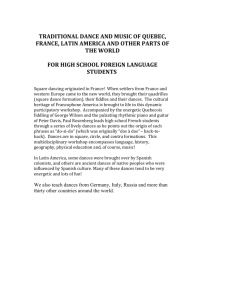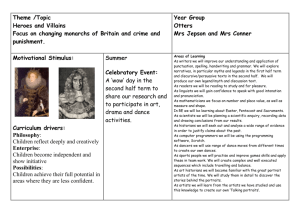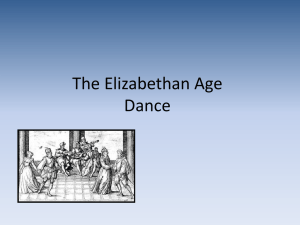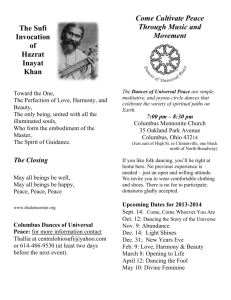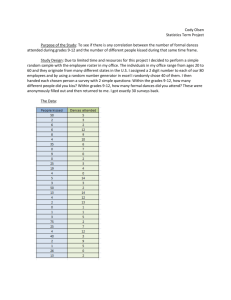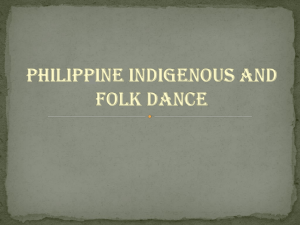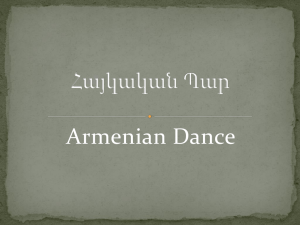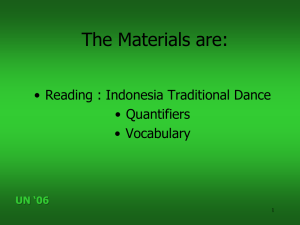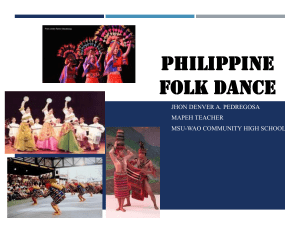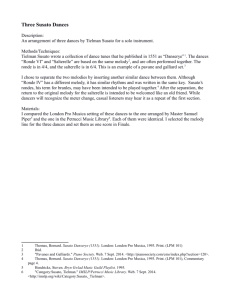ethnic dances of bontoc, ifugao, benguet, apayao
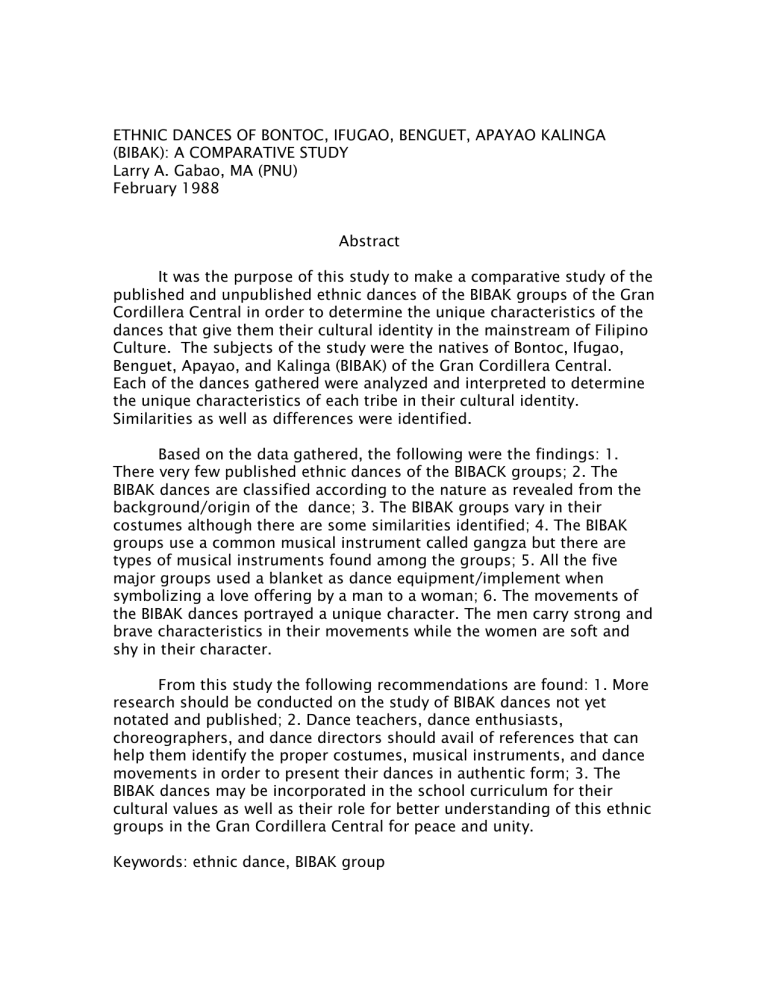
ETHNIC DANCES OF BONTOC, IFUGAO, BENGUET, APAYAO KALINGA
(BIBAK): A COMPARATIVE STUDY
Larry A. Gabao, MA (PNU)
February 1988
Abstract
It was the purpose of this study to make a comparative study of the published and unpublished ethnic dances of the BIBAK groups of the Gran
Cordillera Central in order to determine the unique characteristics of the dances that give them their cultural identity in the mainstream of Filipino
Culture. The subjects of the study were the natives of Bontoc, Ifugao,
Benguet, Apayao, and Kalinga (BIBAK) of the Gran Cordillera Central.
Each of the dances gathered were analyzed and interpreted to determine the unique characteristics of each tribe in their cultural identity.
Similarities as well as differences were identified.
Based on the data gathered, the following were the findings: 1.
There very few published ethnic dances of the BIBACK groups; 2. The
BIBAK dances are classified according to the nature as revealed from the background/origin of the dance; 3. The BIBAK groups vary in their costumes although there are some similarities identified; 4. The BIBAK groups use a common musical instrument called gangza but there are types of musical instruments found among the groups; 5. All the five major groups used a blanket as dance equipment/implement when symbolizing a love offering by a man to a woman; 6. The movements of the BIBAK dances portrayed a unique character. The men carry strong and brave characteristics in their movements while the women are soft and shy in their character.
From this study the following recommendations are found: 1. More research should be conducted on the study of BIBAK dances not yet notated and published; 2. Dance teachers, dance enthusiasts, choreographers, and dance directors should avail of references that can help them identify the proper costumes, musical instruments, and dance movements in order to present their dances in authentic form; 3. The
BIBAK dances may be incorporated in the school curriculum for their cultural values as well as their role for better understanding of this ethnic groups in the Gran Cordillera Central for peace and unity.
Keywords: ethnic dance, BIBAK group
